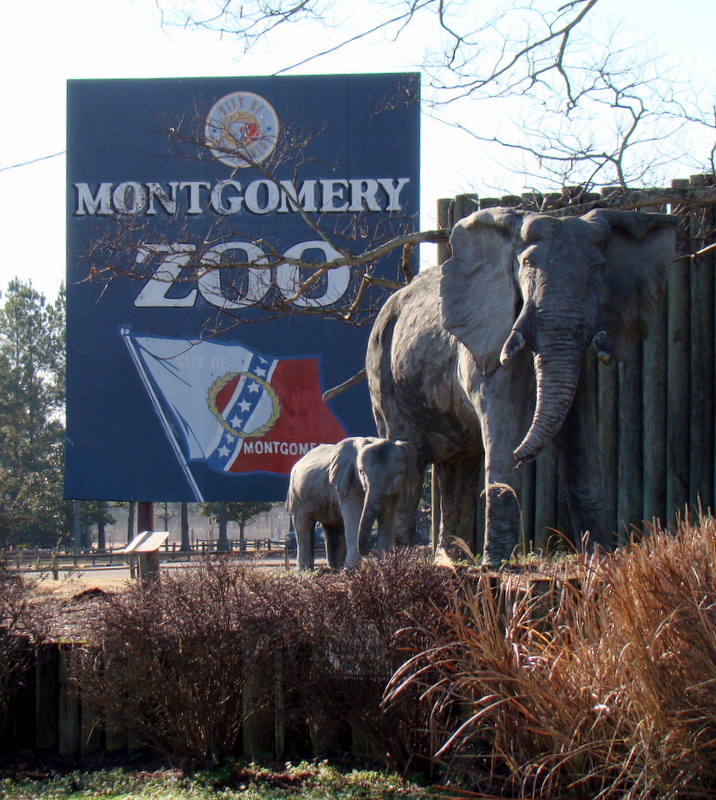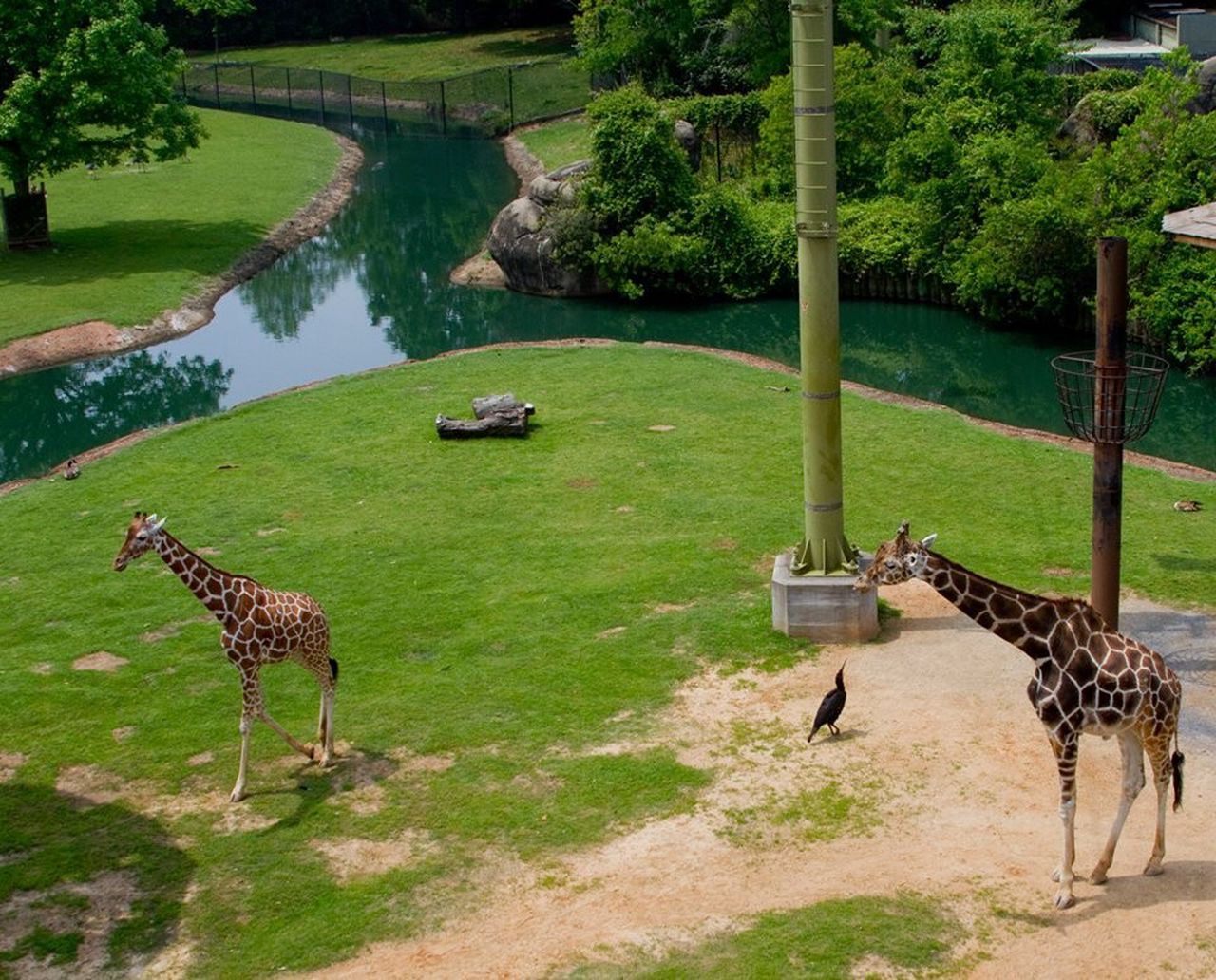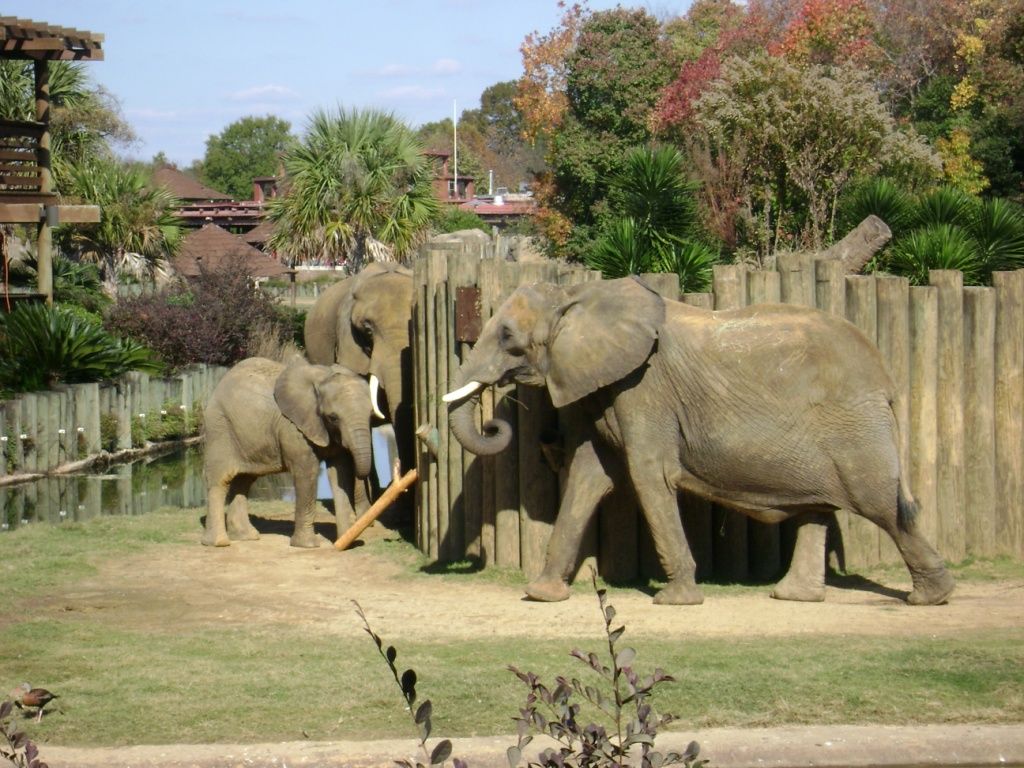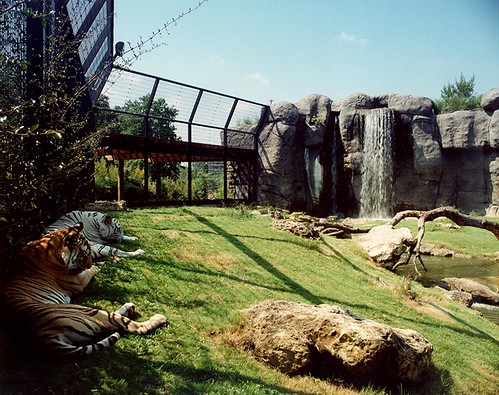The Montgomery Zoo
The Montgomery Zoo has gone through numerous changes since its beginning in the 1935, when it was known as the Oak Park Zoo.
It began as a small collection of animals and has now evolved into a modern facility that has two major objectives: animal conservation as well as educating the public.
This growing and thriving zoo is located just minutes from downtown Montgomery, just off of the Northern Boulevard, at 2301 Coliseum Parkway.
Its exhibits feature animals from five different continents and continues to expand and grow to this day.
These animals are kept in largely barrier-free habitats, and because of this, you and our family can visit and enjoy educational as well as interpretive experiences.
The History of The Montgomery Zoo
 The Sign at The Montgomery Zoo
The Sign at The Montgomery ZooThe history of the Montgomery Zoo all stated in the 1880’s on just over 40 acres, and it was called Oak Park in its early history.
In the year 1935, the Federal Works Administration constructed new facilities in the park, for housing exotic animals.
The Montgomery City Council than appointed a superintendent to manage it and gave it a budget of $1,200 dollars a year.
In these early days, the animals at the zoo included monkeys, bears, deer, alligators, as well as a pair of lions.
In 1956, the U.S. Army Signal Corps gave the then Oak Park Zoo two carrier pigeons, that had been used during World War II to secretly transmit information.
In the mid-1950’s, like all the public facilities in the city of Montgomery, it was strictly segregated.
However, this would change shortly after, as in 1958, a group of African Americans filed a lawsuit against this practice in all public parks.
The following year, the Federal Court in the city ruled that this practice was unconstitutional, and in response, the City closed all the public parks including the zoo.
As a result, the Oak Park Zoo was closed in December of 1959, and all the animals were sold except one lion, the went to the zoo in Birmingham.
The Revival of The Montgomery Zoo
 Giraffes at the Zoo
Giraffes at the ZooThe revival of the Montgomery Zoo started in the mid-1960’s, when the city revisited the idea of a public zoo.
In 1967, the city council approved plans for a 34-acre public park in the northern part of the city.
These plans included a red barn housing s small petting zoo with domestic animals, a flight cage, an island for monkeys, as well as an office and concession stand.
This new facility was renamed the Montgomery Children’s Zoo and was completed in 1971.
Then, the following year, the zoo portion of this new park was named the Montgomery Zoo and expanded to a six-acre facility.
This new facility became the home to over 84 species, that were given to the new park as gifts from other zoos or private individuals.
Then, in 1984, something amazing happened, as a private donor funded a master plan that called for expanding the zoo to 40 acers, with a geography-based theme.
In 1988 the zoo finally gained accreditation for the Association of Zoos and Aquariums, and refocused its efforts on education as well as conservation.
Then, one year later in 1989, the Mayor and City Council started a program to expand, upgrade, as well as modernize the zoo, the bring the quality up to match other zoos in the country.
With this private and well as public funding, they entered an agreement with the Zoological Society to raise over $10 million dollars for a brand-new zoo.
The New Montgomery Zoo
 Elephants at the Zoo
Elephants at the ZooTo run this new Montgomery Zoo, a director was brought in to reorganize the operate it, and in 199, something very interesting happened.
The City elevated the zoo to a department status, and this removed it from the authority of the Parks and Recreation Department.
By doing this, the zoo director now reported directly to the mayor, and it now became a revenue center, with the city keeping all of the revenues.
The new Montgomery Zoo opened in September of 1991, and had over $6 million in construction costs, the collections doubled, and 55 new jobs were added.
In the year 2003 the zoo was un-accredited after some issues but was shortly re-accredited and has since added a 27,000 square foot Mann Museum.
It features exhibits that include wildlife, an elephant habitat, and a North American River Otter habitat, just to name a few of the attractions.
The Animals at the Montgomery Zoo
 Tigers at The Montgomery Zoo
Tigers at The Montgomery ZooIn 1992, the Montgomery Zoo opened the Cougar and Lynx exhibit in the North American realm.
The Reptile house and the Jaguar and Ocelot exhibit were completed in the South American realm, as well as the Chimpanzee and Siamang exhibit in the African realm.
In 1993 the Bengal Tiger exhibit opened with one white and orange tiger, and in 1995 the Bald Eagle exhibit opened.
In 1996 the Black Bear exhibit opened, and a few years later the maned Wolf and Indian Rhino exhibit opened, and in 2010 the Giraffe Encounter and feeding stations opened.
There are also four new exhibits that have just recently opened, and they include the following.
- Snow Leopard
- Greater Kudu
- Bison
- Nile Lechwe
Snow Leopard
First on this list is the Snow Leopard, and with this exhibit, the Zoo now has four of the five large “big cats”.
The five “big cats” include Tigers, Lions, Jaguars, Leopards, and Snow leopards, and this snow leopard is a female, and her native home is the mountain ranges of Central and South Asia.
There are currently fewer than 10,000 of these animals, and there decline in the result of illegal hunting.
Greater Kudu
The Greater Kudu is next of the new exhibits at the Montgomery Zoo, and there are three of them that just arrived.
These are large woodland antelopes that have reddish-brown or bluesish-gray fur, with 4 to 12 stripes along their torso.
Males have beards along their throats, and large horns, and are native to eastern and southern Africa.
Bison
Bison are next, and they are herd animals, and they are the largest North American mammal and males can weigh up to 2,000 pounds.
Females are smaller and can weigh up to 1,000 pounds, and they eat grass, weeds, and plants.
They were hunted to almost extinction in the 19th century, but conservation efforts have saved them.
Nile Lechwe
Nile Lechwe is the last of the new exhibits, and they are also antelopes from the wet and hot climates of Africa.
The male and female are both the same blond colors at birth, but the males’ coats change from blond to dark brown with white patches on the back of their necks as the age.
They are listed as endangered, and there are only about 30,000 of them left in Africa.
The attendance at the zoo today is estimated between 230,000 and 250,000 visitors per year and growing.
If you and your family have never been to the Montgomery Zoo, you will be pleasantly surprised at what you will see there.
References
Animal Encounters | City of Montgomery, AL (montgomeryzoo.com)
http://encyclopediaofalabama.org/article/h-1853

Alabama Gift Store
Numerous Items for You and Your Family to Enjoy
See it here at the Gift Store
Copyright 2019-2023 Alabamabackroads.com
All Rights Reserved
















